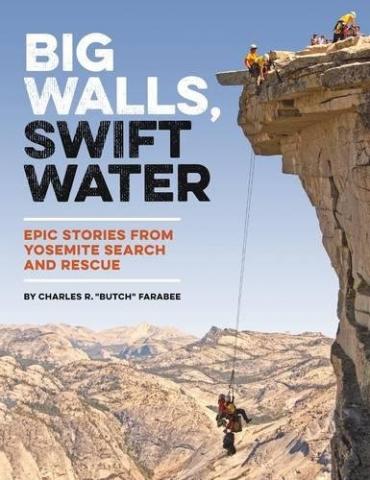When the Yosemite Search and Rescue men and women head out, they might be plucking a hiker from icy waters, evacuating a climber from a sheer cliff, or recovering the body of someone who wasn’t even that lucky. While the technical rescues are pored over on social media, many of their rescues are more mundane: a broken arm after a slippery mistake on the Mist Trail, an elderly gent who is short-of-breath on the Glacier Point trail, or a lost child in the mayhem of Yosemite Valley.
This group trains, trains, and trains some more so it’s ready for anything when the call comes, and Butch Farabee has described the hazards, rescues, and history of YOSAR in this new book from the Yosemite Conservancy. He describes dozens of rescues with helicopters, ropes, boats, scuba gear, and even pack animals. There are stories of climbing rescues, fast water rescues, disappearances, and even of animals that need to be saved.
Farabee, a retired ranger, also describes the early search-and-rescue days in the 1970s, and how events led to this full-time, professional rescue team. Today, Yosemite National Park has nearly 4 million visitors per year, and for most it’s a wonderful experience. But for others it’s the worst day, or last day, of their lives. Farabee writes of the successful rescues, and others with worse outcomes.
For instance, in 1966 a nuclear scientist, Quin Frizell, disappeared on a hike from Tenaya Lake to Yosemite Valley. The search involved more than 100 personnel in rugged terrain, complicated by the fact that Frizell had a top-secret security clearance.
Five years later his skeleton was discovered by the author, with bones still inside boots, and to the wishes of his wife, he was buried in place.
In his career in Yosemite, Farabee went on more than 800 SAR missions, and received the Harry Yount Lifetime Achievement Award, honoring rangers who are the National Park Service’s best. He is also the co-author of Off the Wall: Death in Yosemite and author of Death, Daring, and Disaster: Search and Rescue in the National Parks.
Within its 224 pages, this softcover book has a glossary, notes, and indexes as well.







